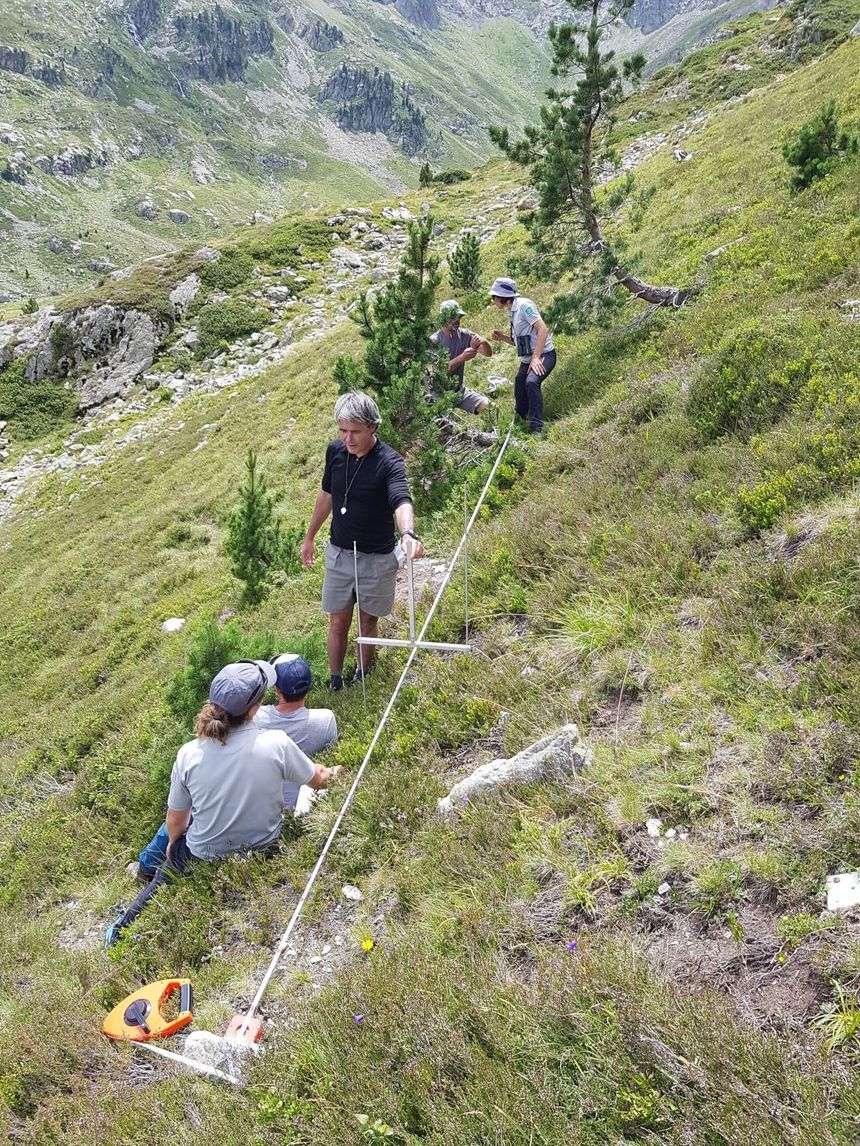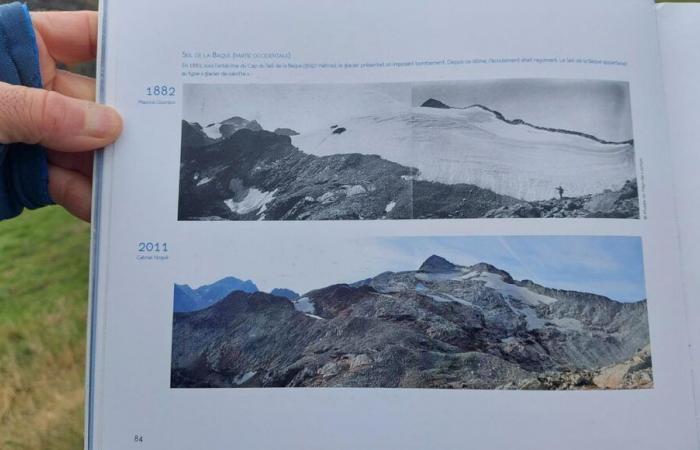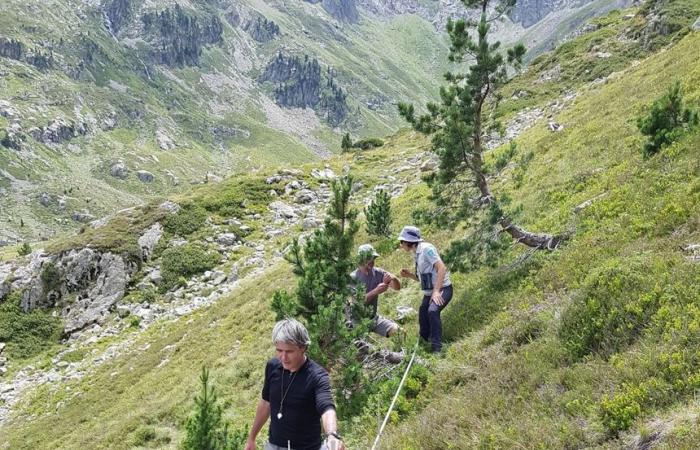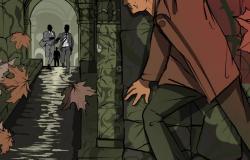The meeting was made early in the morning a few kilometers from Bagnères de Luchon, in Haute-Garonne.
Pierre René created the Moraine association which is an observatory of French Pyrenean glaciers. The glaciologist and mountain guide knows the glacier in front of us well, a little hidden by the clouds.
“We face the Oô valley, a glacial valley and at the bottom of this valley sit the 3000 m of Luchonnais which shelters the last glacier of the French central Pyrenees. It is the Seil de la Baque glacier which was formerly, in 1850, the 2nd largest glacier in the Pyrenees with 145 hectares. Today, there are only 5 hectares left! It has decreased enormously. There are only 17 glaciers left in the Pyrenees. For comparison, there were 100 in 1850 and another 44 at the start of the 2000s. Since we began measuring glaciers, around twenty years ago, on average one glacier per year has disappeared, see more. It's not precise, but it fits more or less with the prospects of a total disappearance within a good ten years.”
With the agony of the Pyrenean glaciers, the most visible effect of climate change, it is the mountain ecosystems that are impacted. Several scientific monitoring protocols have been put in place, notably by the Pyrenees National Park. Monitoring the evolution of fauna and flora, explains Pierre Lapenu, deputy head of the Knowledge and heritage management department at the Pyrenees National Park.
“The objective is to have monitoring at different altitudes that is repeated regularly to see how the environments are evolving at different altitudes under the effect of climate change. We carry out precise inventories of fauna and flora on plots in the mountains, 200 meters apart in altitude. And on each of these plots, we observe over time whether certain species migrate, rise in altitude, move or disappear at certain altitudes if the conditions are no longer favorable for their life. We heard a cicada singing at an altitude of 1700 meters, which is completely astonishing in this environment which, usually, is more of a Capercaillie environment. For example, we have observed a Mediterranean bird which has been nesting at an altitude of 1,400 meters for several years, although this is not normally its environment. But these are one-off observations, outside the protocol, and the objective of the scientific protocols that we put in place is to be able to have a much broader vision to see if these one-off observations recur regularly. and throughout the territory“.

The melting of glaciers is a cross-border affair. The Pyrenean climate change observatory, the OPCC, is working on a common strategy, particularly on risks. This is the work of Eva Garcia Balaguer, coordinator of the OPCC.
“The natural risks with the melting of the ice are more rock falls and landslides in the mountains. Our challenge is to protect ourselves from these risks, but with “green” solutions, solutions based on nature. And there, we already have some achievements, notably on an international Franco-Spanish route. We favored the role of the forest to create terraces and avoid rock falls on the road. This avoids having to screen the mountain and pour concrete. It is important to involve the population and also and above all, we must convince the authorities and elected officials to make the right decisions. We are here to help them“.
6 of the 17 remaining glaciers in the Pyrenees are on the Spanish side. https://www.opcc-ctp.org/








